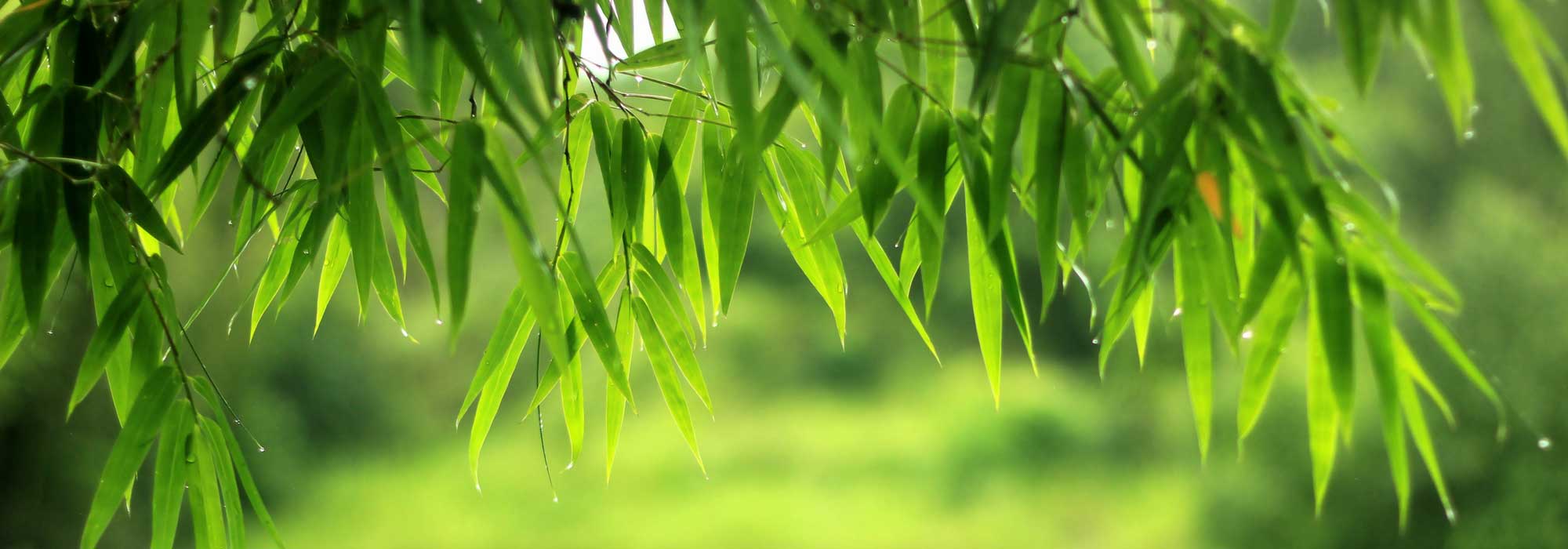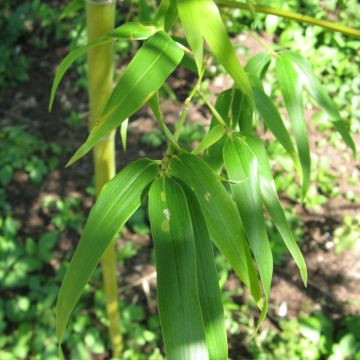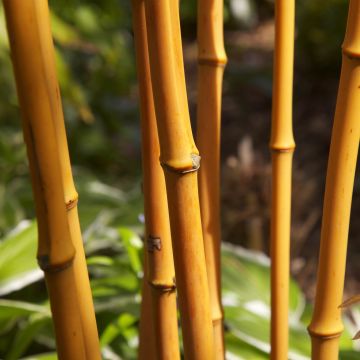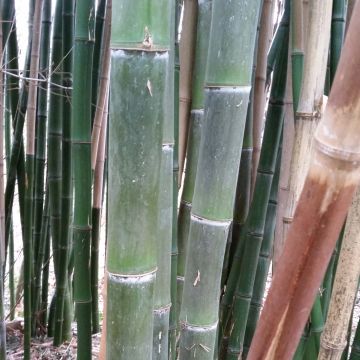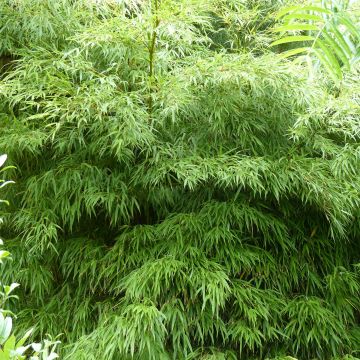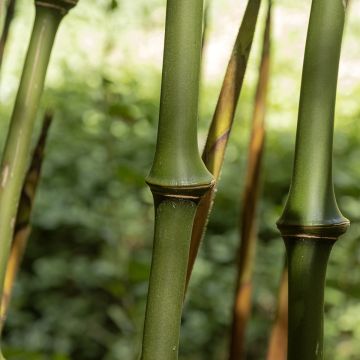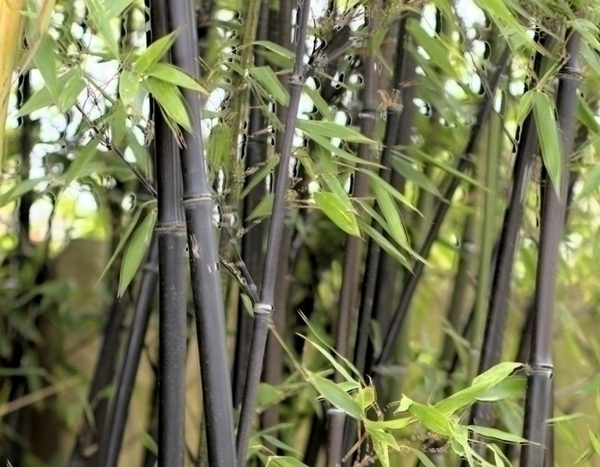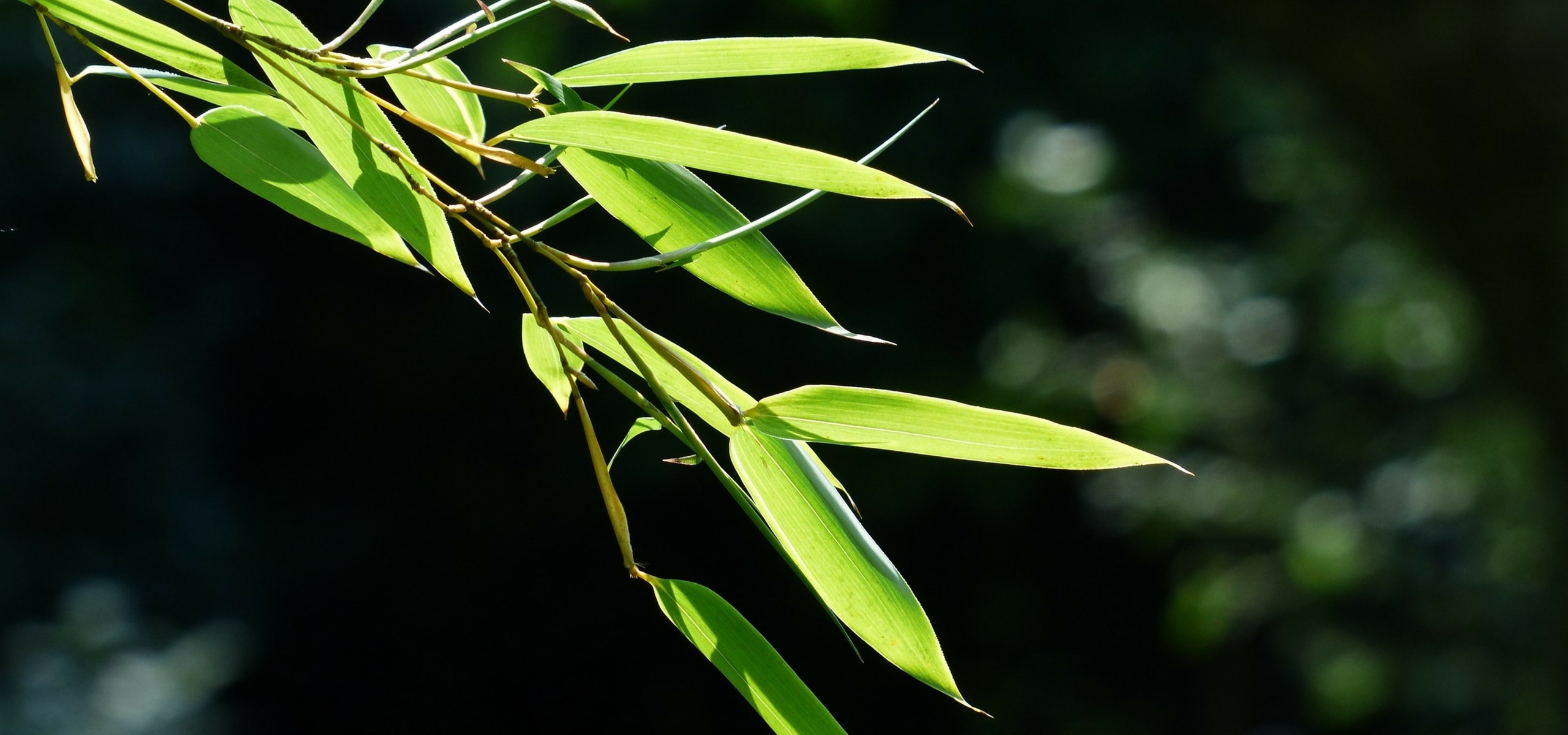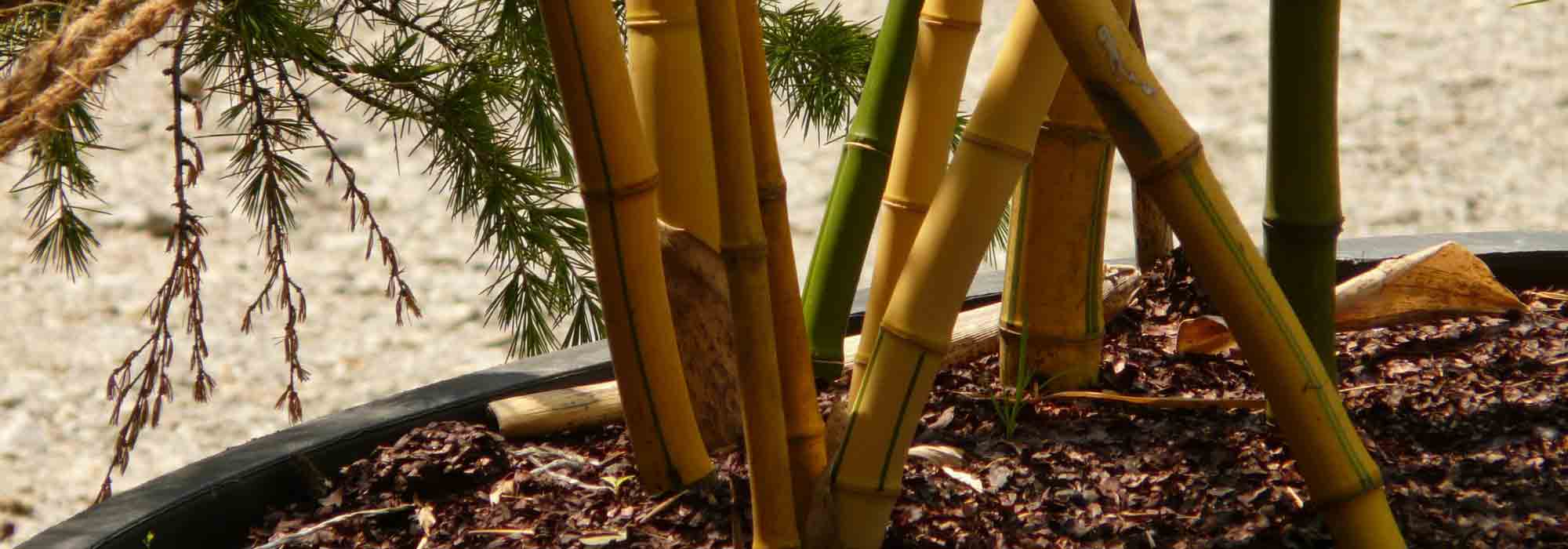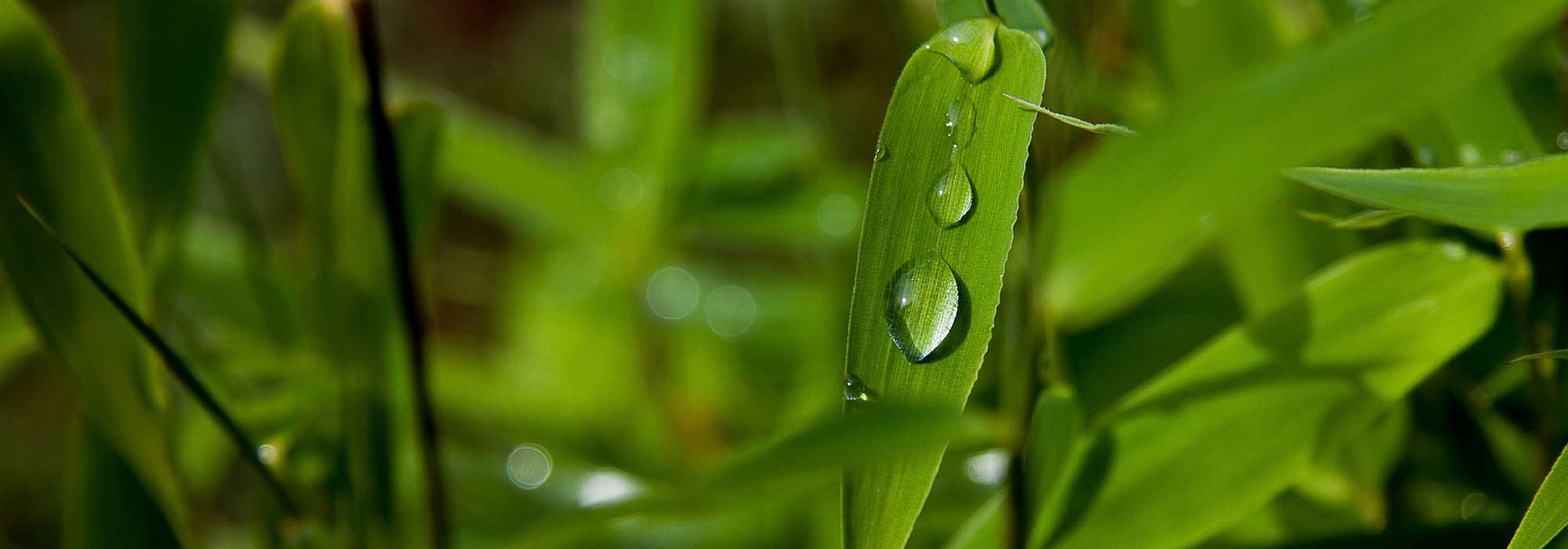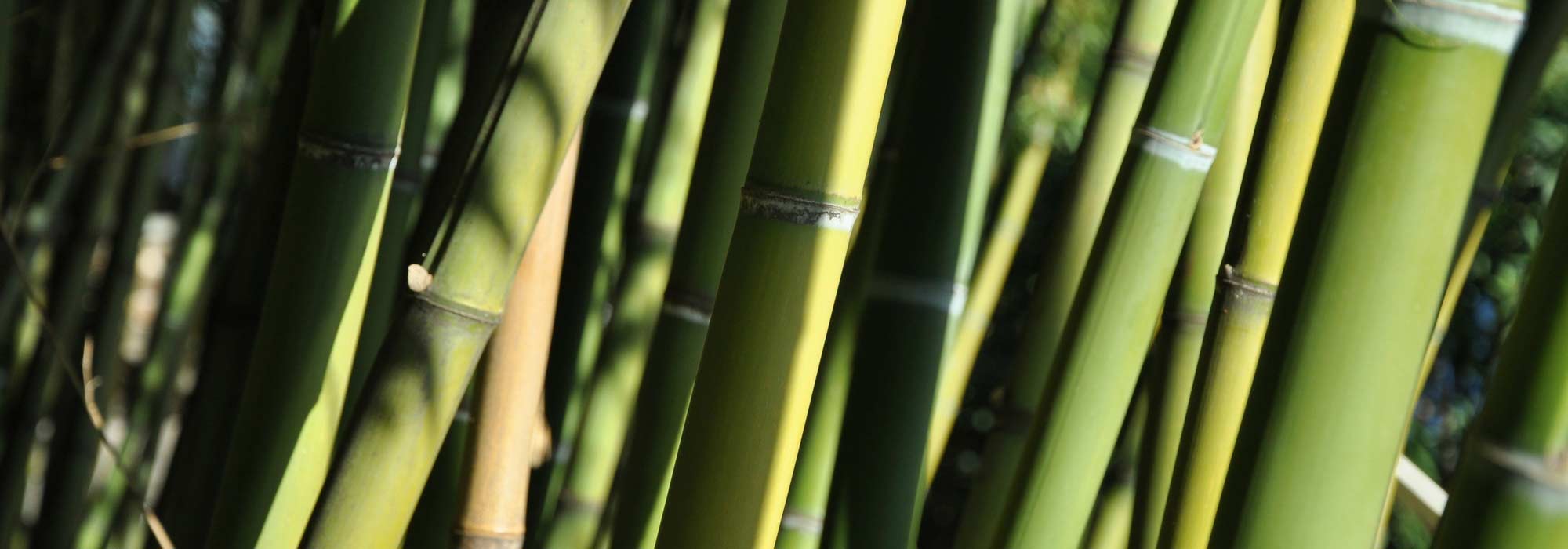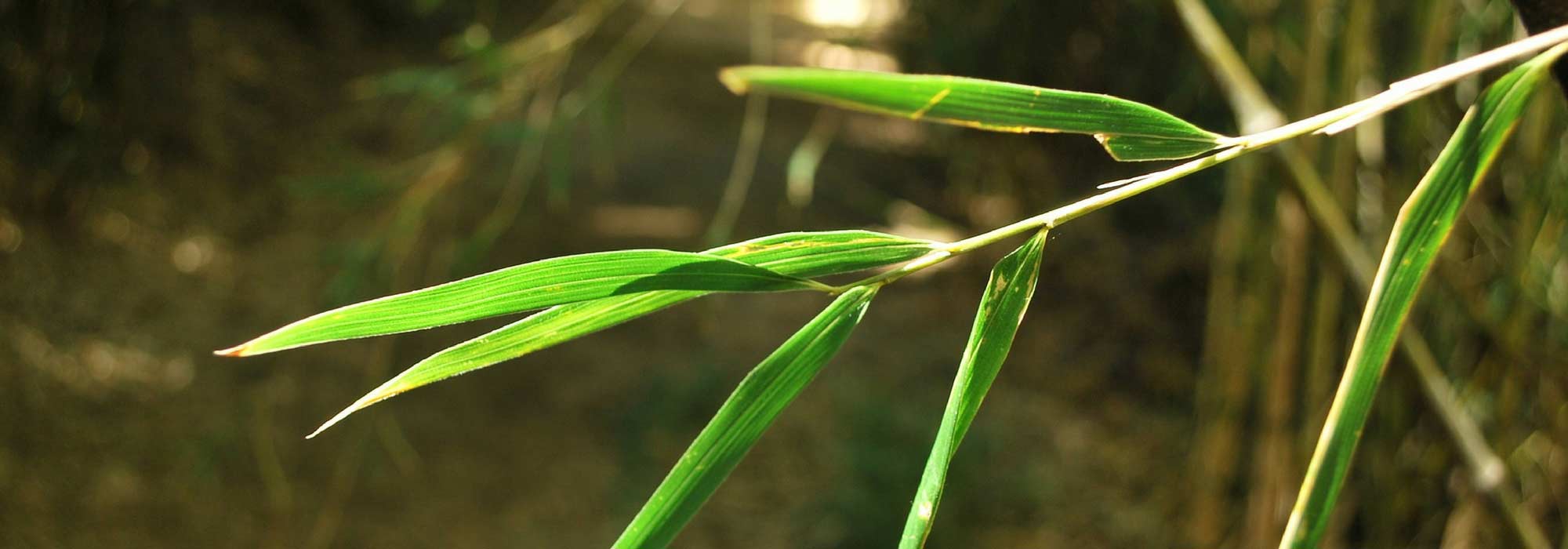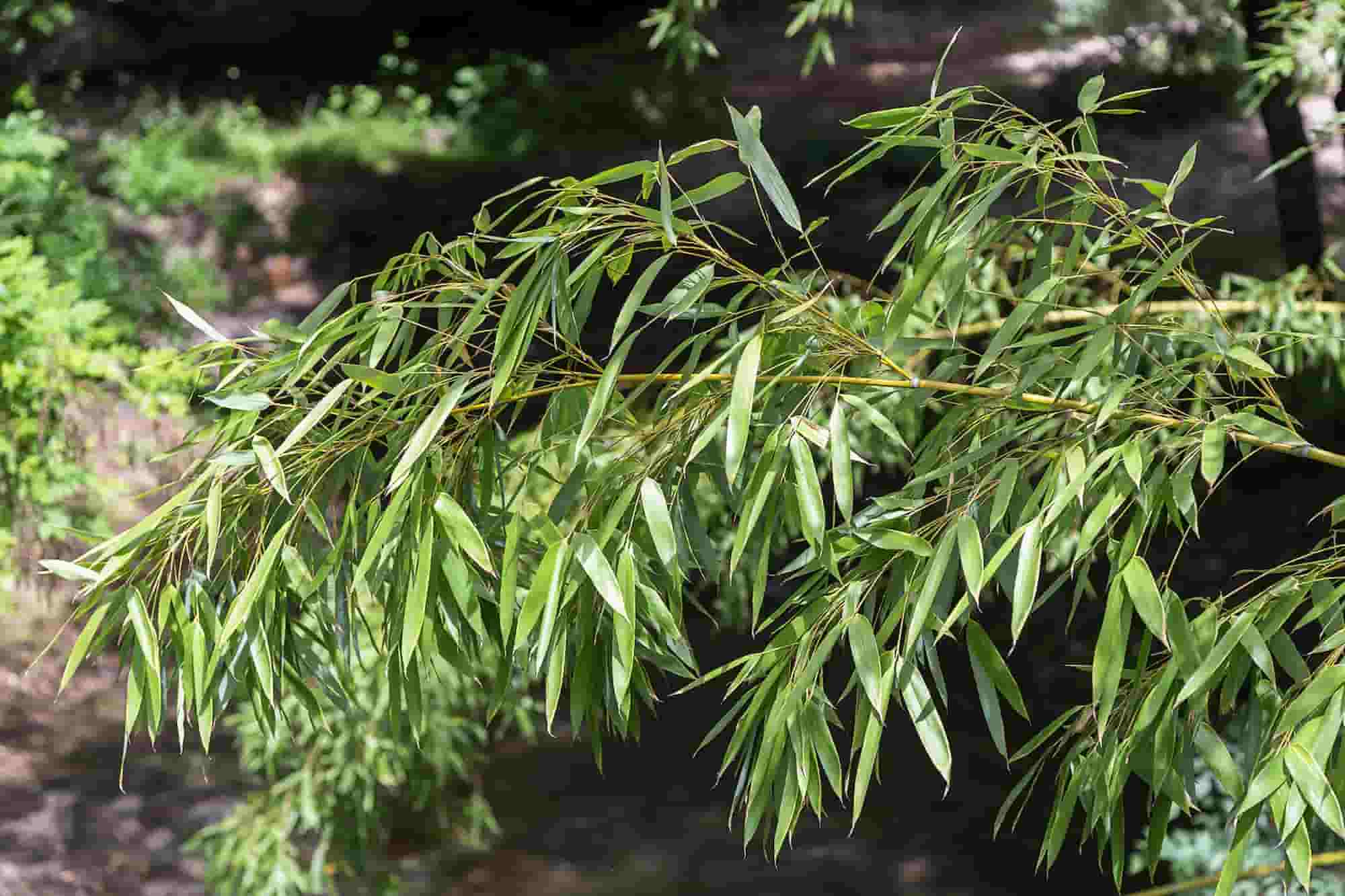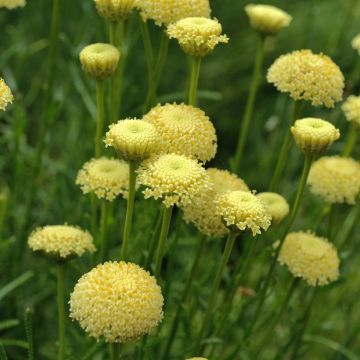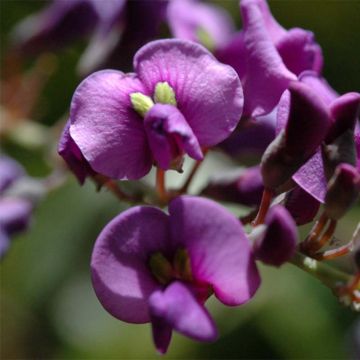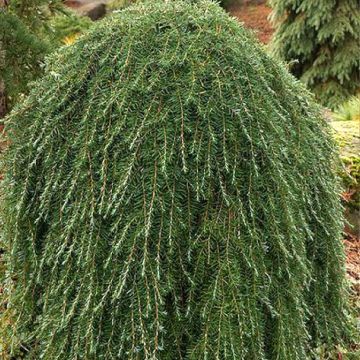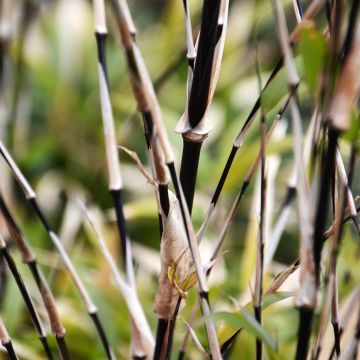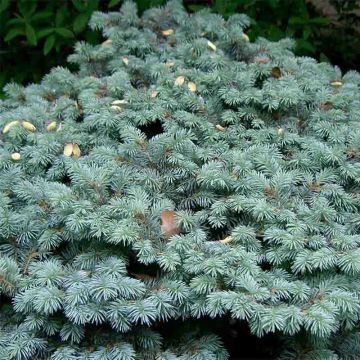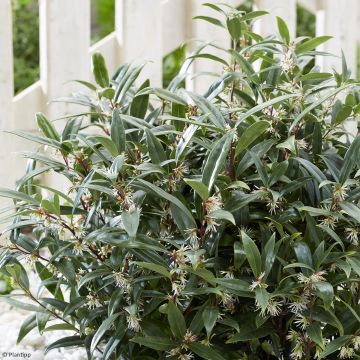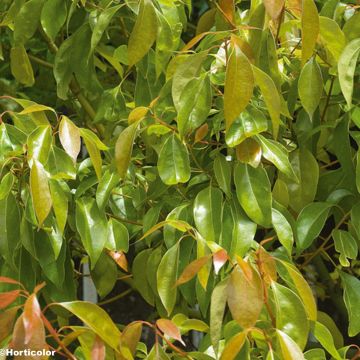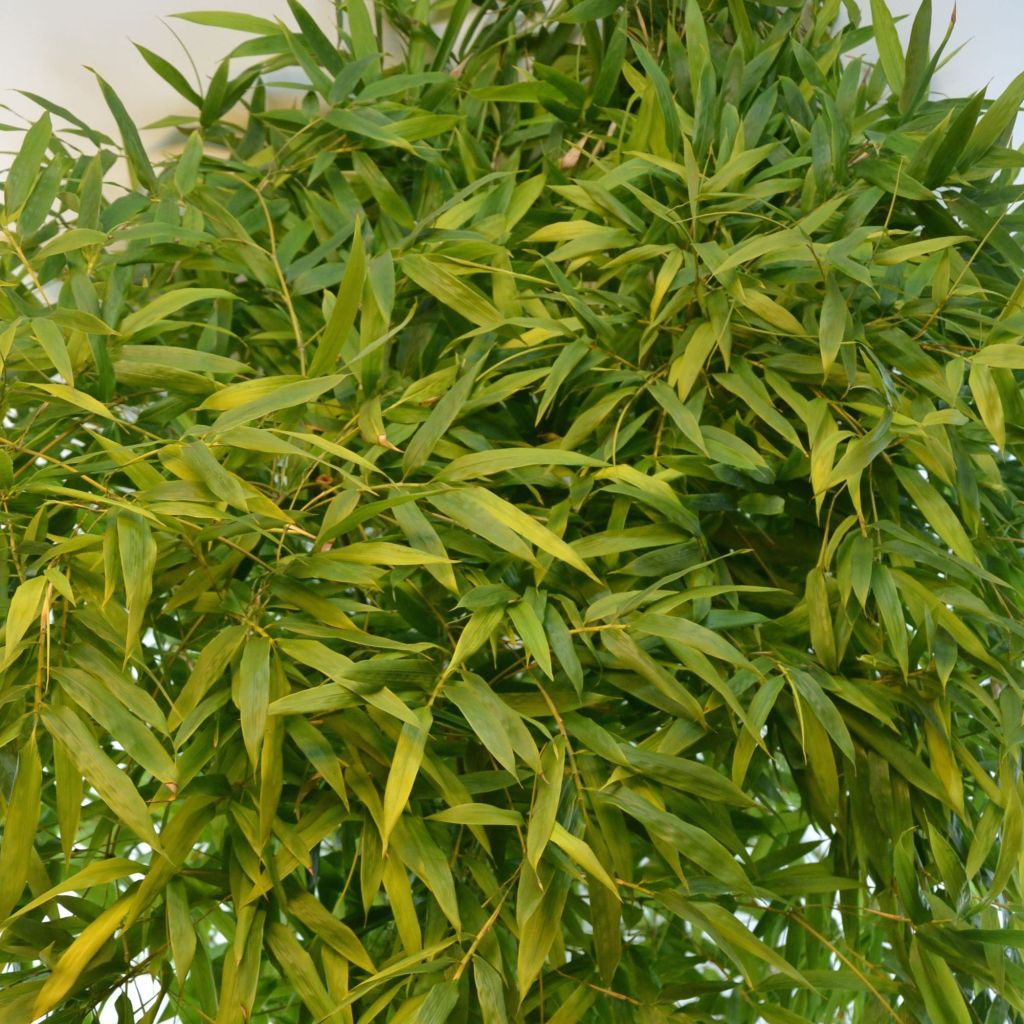

Phyllostachys nigra Boryana - Black Bamboo
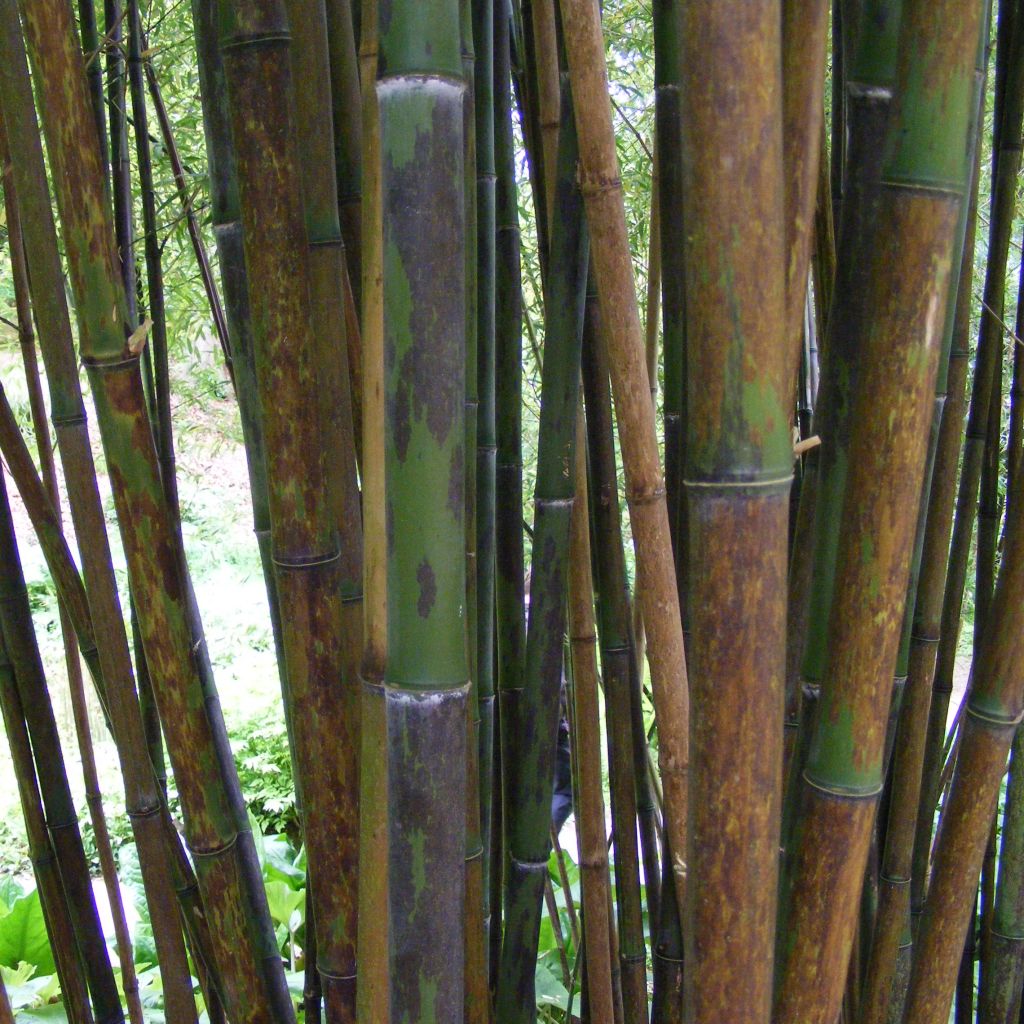

Phyllostachys nigra Boryana - Black Bamboo
Phyllostachys nigra Boryana - Black Bamboo
Phyllostachys nigra Boryana
Black Bamboo, Tiger Bamboo, Leopard Bamboo
The plants have a poor appearance, yellowed, dried up with 1 or 2 living stems, very disappointed.
Carole, 30/09/2023
Special offer!
Receive a €20 voucher for any order over €90 (excluding delivery costs, credit notes, and plastic-free options)!
1- Add your favorite plants to your cart.
2- Once you have reached €90, confirm your order (you can even choose the delivery date!).
3- As soon as your order is shipped, you will receive an email containing your voucher code, valid for 3 months (90 days).
Your voucher is unique and can only be used once, for any order with a minimum value of €20, excluding delivery costs.
Can be combined with other current offers, non-divisible and non-refundable.
Home or relay delivery (depending on size and destination)
Schedule delivery date,
and select date in basket
This plant carries a 24 months recovery warranty
More information
We guarantee the quality of our plants for a full growing cycle, and will replace at our expense any plant that fails to recover under normal climatic and planting conditions.
Would this plant suit my garden?
Set up your Plantfit profile →
Description
Phyllostachys nigra Boryana is a spectacular giant bamboo that can reach a height of 18 m (59.1 ft). Its dark, fine, and dense foliage is carried by sturdy, upright culms, which are dark green with a bluish tint. In the sun, the culms turn yellow and are speckled with brown spots, like a leopard.
It belongs to the large family of Poaceae, like wheat or even couch grass, with which it shares its rhizomatous nature. Indeed, bamboo is a very particular type of plant, which could be likened to a giant woody herb.
Originating from China and Japan, Phyllostachys nigra Boryana has an erect habit. It bears sturdy stems measuring 7 cm to 11 cm (2.7 in to 4.3 in) in diameter, which slightly bend under the weight of its foliage. Its growth is relatively fast, reaching a height of 16 m to 18 m (52.5 ft to 59 in) in just a few years. Perfectly hardy, it withstands temperatures as low as -23° C (-9.4°F). However, in case of snowfall, remember to clear its culms by shaking them.
Bamboos are not demanding plants; they thrive in any garden soil. However, their growth rate and maximum height will be conditioned by the quality and moisture content of the soil. Ideally, plant them in acidic or neutral, light, moist, and well-drained soil. In terms of exposure, we recommend planting Phyllostachys nigra Boryana in partial shade or sun to benefit from its stunning yellow colouration and to protect it from cold winds to which it is somewhat sensitive.
Phyllostachys nigra Boryana is considered a non-invasive bamboo. However, the installation of a rhizome barrier is essential to prevent it from spreading beyond its designated area.
A star of Asian-inspired gardens, bamboo suits many styles, from modern to traditional. When planted in mass, it quickly creates charming little forests, adding beautiful vertical elements to modern gardens and terraces. Its fast growth also makes it an excellent plant for managing privacy in densely populated areas.
Bamboo can also be planted as a standalone specimen. In a mixed border, it pairs well with many plants. In an exotic and lush garden, we recommend pairing it with Hosta Big Daddy or Gunnera manicata.
Did you know? The young shoots, or culms, of this bamboo are edible. They are rich in fibres and low in calories. But don't attempt to eat them raw! They should be peeled, boiled for a long time, and then cut into cubes or slices before being enjoyed.
Phyllostachys nigra Boryana - Black Bamboo in pictures


Plant habit
Foliage
Botanical data
Phyllostachys
nigra
Boryana
Poaceae
Black Bamboo, Tiger Bamboo, Leopard Bamboo
China
Other Spreading Bamboo
View all →Planting and care
Grown in containers, bamboo can be planted at any time of the year, except during freezing temperatures. However, the best planting period is in late summer and autumn, when the soil is warmed up and rainfall is more frequent. The planting distance depends on how you intend to use your bamboo: for a mass planting, allow a gap of 3 m to 4 m (9.8 ft to 13.1 ft) between each plant. For a hedge, this distance can be reduced to 1.6 m to 2 m (5.2 ft to 6.6 ft).
Generally, bamboo prefers rich, well-drained soil that remains moist, either acidic or neutral. They can tolerate slightly limestone soil.
During planting, make sure to loosen the soil and thoroughly moisten the root ball by soaking it. You can add well-decomposed compost and gently rake it into the surface. Watering should be consistent, especially during the first year when planted in the ground, and continuously if your bamboo is grown in a pot. The establishment period may sometimes seem a bit long, but don't panic!
For running bamboo varieties, the installation of a rhizome barrier (thick and durable polypropylene film) is essential because these varieties can quickly colonise large areas. The rhizome barrier should be buried vertically, with a height of 10 cm (3.9 in) protruding above the ground and inclined at a 15-degree angle towards the plant.
In terms of maintenance, bamboo is not demanding: remember to weed around their base, at least in the beginning, until their dead leaves form a natural mulch on the ground. An application of nitrogen-rich fertiliser (well-decomposed manure or liquid fertiliser) in spring and autumn can be beneficial.
Planting period
Intended location
Care
Planting & care advice
-
, onOrder confirmed
Reply from on Promesse de fleurs
Similar products
Haven't found what you were looking for?
Hardiness is the lowest winter temperature a plant can endure without suffering serious damage or even dying. However, hardiness is affected by location (a sheltered area, such as a patio), protection (winter cover) and soil type (hardiness is improved by well-drained soil).

Photo Sharing Terms & Conditions
In order to encourage gardeners to interact and share their experiences, Promesse de fleurs offers various media enabling content to be uploaded onto its Site - in particular via the ‘Photo sharing’ module.
The User agrees to refrain from:
- Posting any content that is illegal, prejudicial, insulting, racist, inciteful to hatred, revisionist, contrary to public decency, that infringes on privacy or on the privacy rights of third parties, in particular the publicity rights of persons and goods, intellectual property rights, or the right to privacy.
- Submitting content on behalf of a third party;
- Impersonate the identity of a third party and/or publish any personal information about a third party;
In general, the User undertakes to refrain from any unethical behaviour.
All Content (in particular text, comments, files, images, photos, videos, creative works, etc.), which may be subject to property or intellectual property rights, image or other private rights, shall remain the property of the User, subject to the limited rights granted by the terms of the licence granted by Promesse de fleurs as stated below. Users are at liberty to publish or not to publish such Content on the Site, notably via the ‘Photo Sharing’ facility, and accept that this Content shall be made public and freely accessible, notably on the Internet.
Users further acknowledge, undertake to have ,and guarantee that they hold all necessary rights and permissions to publish such material on the Site, in particular with regard to the legislation in force pertaining to any privacy, property, intellectual property, image, or contractual rights, or rights of any other nature. By publishing such Content on the Site, Users acknowledge accepting full liability as publishers of the Content within the meaning of the law, and grant Promesse de fleurs, free of charge, an inclusive, worldwide licence for the said Content for the entire duration of its publication, including all reproduction, representation, up/downloading, displaying, performing, transmission, and storage rights.
Users also grant permission for their name to be linked to the Content and accept that this link may not always be made available.
By engaging in posting material, Users consent to their Content becoming automatically accessible on the Internet, in particular on other sites and/or blogs and/or web pages of the Promesse de fleurs site, including in particular social pages and the Promesse de fleurs catalogue.
Users may secure the removal of entrusted content free of charge by issuing a simple request via our contact form.
The flowering period indicated on our website applies to countries and regions located in USDA zone 8 (France, the United Kingdom, Ireland, the Netherlands, etc.)
It will vary according to where you live:
- In zones 9 to 10 (Italy, Spain, Greece, etc.), flowering will occur about 2 to 4 weeks earlier.
- In zones 6 to 7 (Germany, Poland, Slovenia, and lower mountainous regions), flowering will be delayed by 2 to 3 weeks.
- In zone 5 (Central Europe, Scandinavia), blooming will be delayed by 3 to 5 weeks.
In temperate climates, pruning of spring-flowering shrubs (forsythia, spireas, etc.) should be done just after flowering.
Pruning of summer-flowering shrubs (Indian Lilac, Perovskia, etc.) can be done in winter or spring.
In cold regions as well as with frost-sensitive plants, avoid pruning too early when severe frosts may still occur.
The planting period indicated on our website applies to countries and regions located in USDA zone 8 (France, United Kingdom, Ireland, Netherlands).
It will vary according to where you live:
- In Mediterranean zones (Marseille, Madrid, Milan, etc.), autumn and winter are the best planting periods.
- In continental zones (Strasbourg, Munich, Vienna, etc.), delay planting by 2 to 3 weeks in spring and bring it forward by 2 to 4 weeks in autumn.
- In mountainous regions (the Alps, Pyrenees, Carpathians, etc.), it is best to plant in late spring (May-June) or late summer (August-September).
The harvesting period indicated on our website applies to countries and regions in USDA zone 8 (France, England, Ireland, the Netherlands).
In colder areas (Scandinavia, Poland, Austria...) fruit and vegetable harvests are likely to be delayed by 3-4 weeks.
In warmer areas (Italy, Spain, Greece, etc.), harvesting will probably take place earlier, depending on weather conditions.
The sowing periods indicated on our website apply to countries and regions within USDA Zone 8 (France, UK, Ireland, Netherlands).
In colder areas (Scandinavia, Poland, Austria...), delay any outdoor sowing by 3-4 weeks, or sow under glass.
In warmer climes (Italy, Spain, Greece, etc.), bring outdoor sowing forward by a few weeks.






























